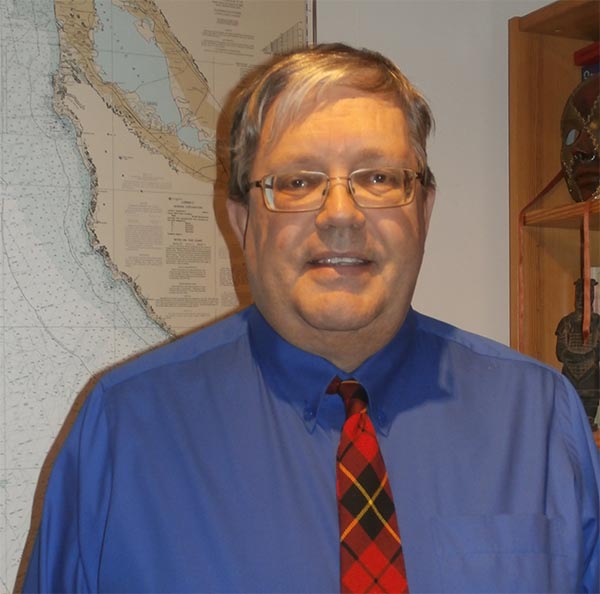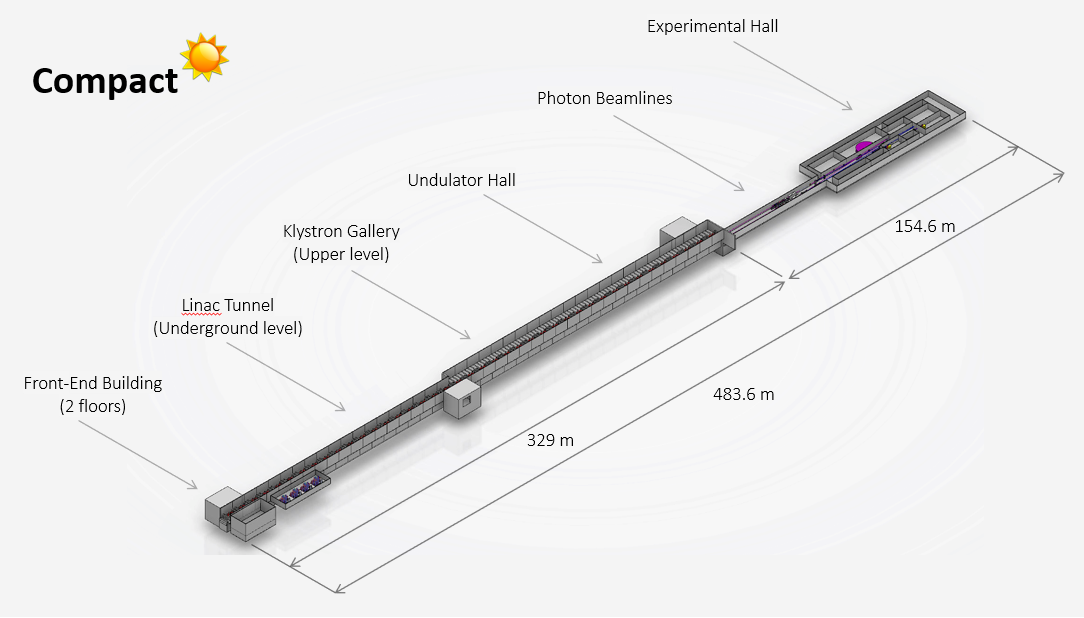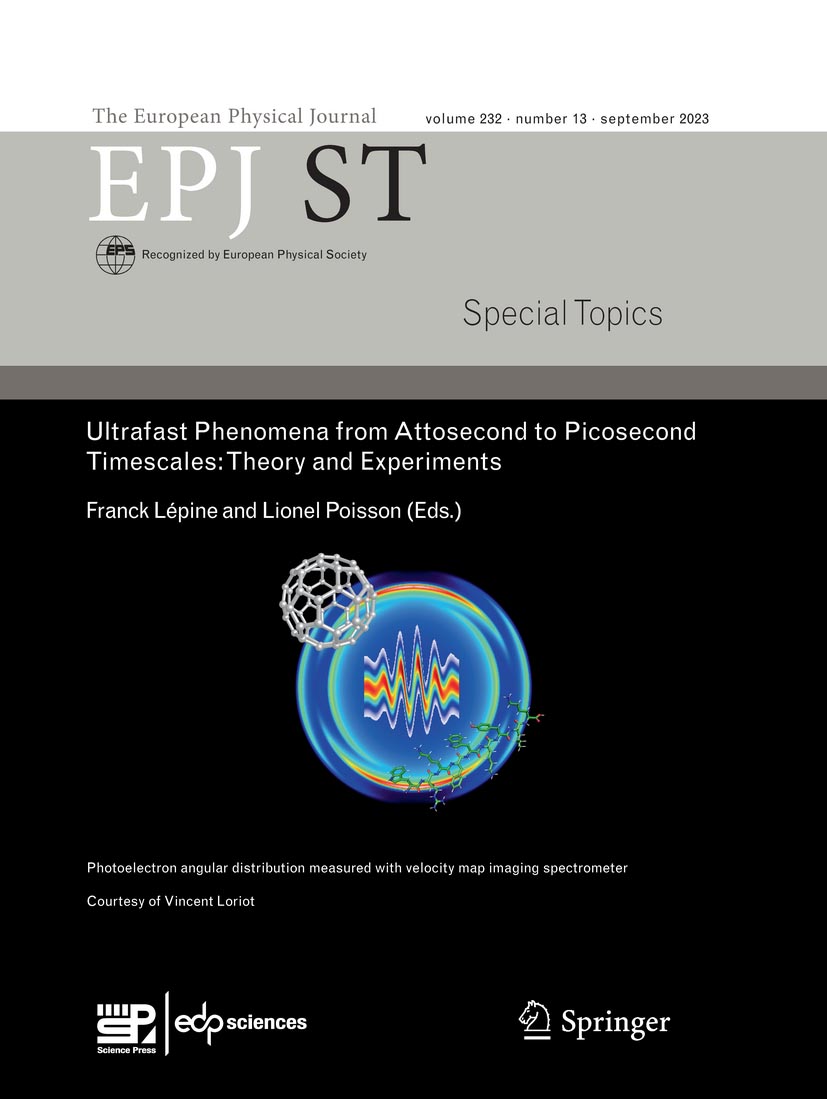EPJ ST: Miroslav Dramićanin new Editor on board
- Details
- Published on 20 June 2024

The publishers are very pleased to announce that Prof. Miroslav Dramićanin has recently joined the EPJST Editorial Board.
Prof. Miroslav Dramićanin is a full professor of applied physics at the University of Belgrade and a research fellow at the Vinca Institute of Nuclear Sciences in Belgrade. His research group, the Optical Materials and Spectroscopy Group, is working on luminescent materials and nanomaterials for lighting and sensing. His primary interests are lanthanide and transition metal-activated phosphors, luminescence thermometry, and optical spectroscopy. He is an animal lover and environmental activist.
EPJ ST: Norbert Marwan new Editor on board
- Details
- Published on 13 June 2024

The publishers are very pleased to announce that Dr. Norbert Marwan has recently joined the EPJST Editorial Board.
Dr. Norbert Marwan is the deputy head of the Complexity Science department at the Potsdam Institute for Climate Impact Research (PIK) in Potsdam, Germany. He also serves as a private docent at both the Institute of Physics and Astronomy and the Institute of Geosciences at the University of Potsdam. He studied Theoretical Physics at the Dresden University of Technology and earned his PhD from the University of Potsdam in 2003. Additionally, he is the organizer of the biennial International Symposium on Recurrence Plots.
His research interests encompass all aspects of investigating complex systems, nonlinear data analysis, and related interdisciplinary applications. One particular focus is on recurrence plot-related methods and studying palaeoclimate variability using speleothems. He has published more than 270 peer-reviewed research papers.
EPJ ST: John Weisend new Editor on board
- Details
- Published on 12 June 2024

The publishers are very pleased to announce that Dr. John Weisend has recently joined the EPJST Editorial Board.
John Weisend is currently a Senior Scientist in the Accelerator Division at the European Spallation Source in Lund, Sweden. He is also an Adjunct Professor of Engineering at Lund University. He received his Ph.D. in Nuclear Engineering & Engineering Physics from the University of Wisconsin – Madison. He has worked at the SSC Laboratory, the Centre D’Etudes Nucleaires Grenoble, the Deutsches Elecktronen-Synchrotron Laboratory (DESY), the Stanford Linear Accelerator Laboratory (SLAC), the National Science Foundation and Michigan State University.
Dr. Weisend’s interests include He II, cryogenic safety, large scale accelerator cryogenics and the development of large international science projects. He published various books including Superfluid, He is for Helium, Going for Cold (co-authored with T. Meaden), Cryogenic Safety (co-authored with T. Peterson), Cryogenic Two-Phase Flow (co-authored with N. Filina) and is an editor of the Handbook of Cryogenic Engineering and of Cryostat Design. He writes a regular column “Cryo Bios” for the publication Cold Facts. Dr. Weisend is a Co-Editor in Chief for the journal Interactions. He is a chair of the Cryogenic Society of America and the International Cryogenic Engineering Conference Board.
EPJ ST: Filippos Sofos new Editor on board
- Details
- Published on 10 June 2024

The publishers of The European Physical Journal Special Topics are pleased to announce the appointment of Dr Filippos Sofos as new Editor in the board.
Dr. FILIPPOS SOFOS is an Assistant Professor in Computational Condensed Matter Physics, at the Department of Physics, University of Thessaly, GR. He studied Electrical and Computer Engineering at the Democritus University of Thrace, GR, where he also obtained his MSc in Microelectronics and Digital Systems, and received his PhD from the Civil Engineering Department, University of Thessaly, GR. The topic of his PhD Thesis was related to the investigation of flows at the nano/micro-scale with the Molecular Dynamics method.
His research interests focus on the application of innovative machine learning methods in physical sciences, big data analysis, deep learning and super resolution, genetic programming, as well as numerical simulation methods in fluid mechanics and materials, multiscale modeling, nanofluidics, and computational Hydraulics. In these directions, he has published more than 100 journal and conference proceedings papers.
EPJ ST: Jingting Luo new Editor on board
- Details
- Published on 13 May 2024

The publishers of The European Physical Journal Special Topics are pleased to announce the appointment of Professor Jingting Luo as new Editor in the board.
Jingting Luo received the Ph.D. degree from Tsinghua University, Beijing, China, in 2012.
He worked as an Academic Visitor with the Faculty of Engineering and Environment, Northumbria University, Newcastle upon Tyne, U.K., in 2016.
Since 2012, he has been working as a Researcher with Shenzhen University, Shenzhen, China, where he is currently a Professor with the College of Physics and Optoelectronic Engineering. He is the Director of Shenzhen Key Laboratory of Advanced Thin Films and Applications.
He has published over 150 science citation index (SCI) journal articles and more than 20 high cited articles. He has extensive experience in thin film materials and devices, including optoelectronics thin film and solar cells, thermoelectric thin film and devices, smart thin films, biomedical microdevices, lab-on-chip, MEMS, sensors and microfluidics.
EPJ ST Highlight - CompactLight: Designing a Cost-Effective XFEL Facility
- Details
- Published on 10 April 2024

An international group of experts has produced a design for a free electron X-ray laser facility that is significantly smaller and cheaper than those that are currently in use.
Very many advances in structural science since the 1970s were made by probing materials with synchrotron radiation: that is, high energy X-rays generated through accelerating high-energy electrons. The latest generation of such sources, X-ray free electron lasers (XFEL) are far more powerful than their predecessors, but are only accessible to international consortia and a few rich countries because of their high cost. Now, an international group of experts have prepared a design for a more compact and cost-effective XFEL system, accessible to small countries and, perhaps, some individual laboratories. The design is published in EPJ Special Topics (EPJ ST).
EPJ ST Highlight - An exciting era for ultrafast science in France
- Details
- Published on 15 December 2023

Progress across five scientific topics currently being investigated by the French scientific network on ultrafast phenomena highlight both a rapid pace of discovery and emerging new directions of research.
From biochemistry to quantum mechanics, ultrafast phenomena can be found across a broad array of scientific fields. Now the subject of a rapidly expanding area of research, they describe how matter behaves over timescales ranging from picoseconds (thousandths of a nanosecond), down to attoseconds (billionths of a nanosecond).
Today, ultrafast processes are studied by a global community of scientists, who are dedicated to understanding the inner workings of matter, and exploring how they can be controlled and exploited for novel applications. In 2023, three researchers were awarded the Nobel Prize in Physics for their contribution to attosecond laser technology: clearly emphasising the growing relevance of the field.
EPJ ST Highlight - Capturing the evolution of complex quantum systems
- Details
- Published on 09 August 2023

Through a new survey, researchers show how mathematical representations named ‘tensor trains’ can help to capture and simulate the dynamics of evolving quantum systems across a range of different scenarios.
Many quantum systems are heavily influenced by their surrounding environments, making them incredibly challenging to describe theoretically. To capture the dynamics and evolution of these systems, researchers often use mathematical representations named ‘tensor trains’. Through new research published in EPJ ST, a team of researchers from four different institutions in France show how tensor trains can be implemented to describe and simulate quantum systems.
EPJ ST Highlight - Many-body interactions feel the heat: Introducing thermal field theory
- Details
- Published on 01 August 2023

Thermal field theory seeks to explain many-body dynamics at non-zero temperatures not considered in conventional quantum field theory.
Quantum field theory is a framework used by physicists to describe a wide range of phenomena in particle physics and is an effective tool to deal with complicated many-body problems or interacting systems.
Conventional quantum field theory describes systems and interactions at zero temperature and zero chemical potential, and interactions in the real world certainly do occur at non-zero temperatures. That means scientists are keen to discover what effects may arise as a result of non-zero temperature and what new phenomena could arise due to a thermal background. In order to understand this, physicists turn to a recipe for quantum field theory in a thermal background — thermal field theory.
In a new paper in EPJ ST, Munshi G. Mustafa, Senior Professor at the Saha Institute of Nuclear Physics, Kolkata, India, introduces a thermal field theory in a simple way weaving together the details of its mathematical framework and its application.
EPJ ST Highlight - Investigating the Ising model with magnetisation
- Details
- Published on 27 July 2023

Researchers have explored the evolution of systems of interacting spins, as they transition from random to orderly alignments. Through new simulations, they show that this evolution can be investigated by measuring the changing strength of the system’s magnetism.
The Ising model describes systems of interacting atomic spins relaxing from a ‘paramagnetic’ state – whose spins point in random directions, to a ‘ferromagnetic’ state – whose spins spontaneously align with each other. So far, the nonequilibrium dynamics of this transition has been studied by measuring the growth of regions, or ‘domains’ of aligned spins. In new research published in EPJ ST, researchers led by Wolfhard Janke at the University of Leipzig, Germany, show how this can be done far more easily by measuring the strength of the system’s magnetisation. The team’s discovery could help researchers to better understand the atomic-scale interactions underlying many different phenomena in nature: from electrostatic forces, to neuroscience and economics.




